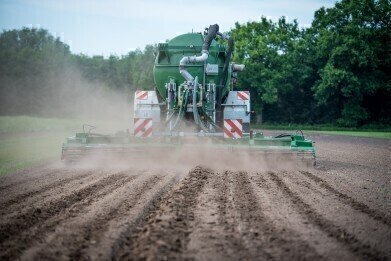Waste Management
How Bad Is Ammonia Pollution in the UK?
Sep 25 2019
A new government report has painted a damning picture of the effect of ammonia pollution on Britain’s rural areas. As much as 60% of the UK’s total landmass is adversely affected by unsafe concentrations of ammonia and nitrogen, the majority of which come from the agricultural industry.
Both contaminants form key components of the fertilisers used by farming to stimulate growth among their crops, as well as from the manure from their livestock. However, despite the shocking figures revealed by its own report, the government appears to have no concrete plans for monitoring concentrations of ammonia or assuaging the problem.
By the numbers
When divided into its constituent nations, the UK’s ammonia problem becomes even more concerning. Over 85% of English land is affected by dangerous levels of ammonia pollution, while the figure is even higher in Northern Ireland at 88%. Wales brings the overall average down somewhat, with just over a half of land compromised, while Scottish practices were the best ones, with less than 20% of its landmass at risk.
Particularly troubling is the fact that the issue is even more serious among Britain’s most vulnerable sites. Concentrating on special protected areas, special areas of conservation and sites of special scientific interest, a whopping 95% of English sites suffered from excessive pollution. Northern Ireland and Wales fared little better, at 85% and 89% respectively, while Scotland showed dangerous levels at only 40% of the areas monitored.
Grave consequences
The knock-on effects of an overload of ammonia and nitrogen can be felt in the air, sea and land. In large concentrations, ammonia causes damage and pain to the nose, throat and eyes and in serious cases, can even result in death. Meanwhile, the management of ammonia levels in an aquaculture environment is a problem all to itself; excess levels of the chemical can stimulate growth of certain lifeforms and inhibit others, thus disrupting the natural ecosystem.
The same problem can be observed on land, as well. Moss, lichen, liverwort and similar plants are most vulnerable to the pollutants, and while they might seem unimportant, they can have huge knock-on ramifications for other species. That’s because they are important habitats for a variety of invertebrates, which are in turn a primary source of food for birds. Meanwhile, lichens and mosses are also instrumental in absorbing rainwater and preventing floods, as well as storing the moisture for dryer periods.
Measured agricultural reform needed
With 87% of ammonia pollution caused by the agricultural industry, it’s clear that something must be done to tackle this runaway problem. The majority of those contaminants are produced during fertilisation of crops, but the waste generated by cattle, poultry and other livestock are also contributing factors.
As such, the government must seek to reform the industry without upsetting the delicate balance of food security and land use. In the past, certain altruistic measures have had unintended consequences in other environmental areas; for example, water conservation measures in India inadvertently increased air pollution by delaying crop stubble burning until later in the year. Therefore, the government must consider all factors and collate comprehensive data on the subject before implementing any plans to alleviate it.
Events
May 05 2024 Seville, Spain
May 13 2024 Munich, Germany
May 23 2024 Beijing, China
May 23 2024 Beijing, China
Jun 10 2024 Algiers, Algeria













